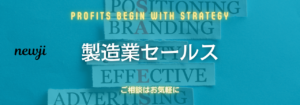- お役立ち記事
- Product design that prevents rework and points to keep in mind

Product design that prevents rework and points to keep in mind

目次
Understanding Product Design
Product design is a crucial aspect of creating new products that meet customer needs and business goals.
It involves not just how a product looks, but how it functions, feels, and provides value to the users.
When done effectively, product design can distinguish a brand and fuel its success in the marketplace.
However, the process can often lead to rework if not conducted carefully.
Understanding why and how rework happens is essential for streamlining the design process and achieving a successful final product.
Why Rework Happens in Product Design
Rework in product design can occur for a variety of reasons.
One common factor is insufficient research and planning.
Without comprehensive user and market research, designers might overlook critical needs or trends, resulting in products that fall short of customer expectations.
Another reason is poor communication among team members.
If design teams fail to share ideas and updates effectively, it can lead to inconsistencies and misaligned objectives.
Additionally, changes in project scope can prompt rework, especially if modifications are not managed properly.
Unclear objectives and unrealistic timelines also contribute to reworking designs, as designers may rush to meet deadlines without thoroughly addressing the initial design problems.
Points to Keep in Mind to Prevent Rework
Conduct Thorough Research
Investing time in detailed research before starting the design process can save a significant amount of time later.
This includes understanding the target audience, analyzing market trends, and evaluating competitor products.
User surveys, interviews, and observations can provide valuable insights into customer needs and preferences.
Define Clear Objectives
Establishing clear, concise objectives at the outset of the design process sets a solid foundation for the project.
Clearly defined goals align team efforts and ensure everyone understands the purpose and direction of the design work.
This alignment helps prevent scope creep and unnecessary revisions later on.
Improve Communication
Effective communication within the design team and with stakeholders is vital.
Regular updates and collaborative discussions keep everyone informed and aligned.
Using digital tools for project management and communication can enhance efficiency and ensure everyone has access to the latest versions of design documents.
Utilize Prototyping
Creating prototypes is a valuable way to test and validate design concepts early in the process.
Prototypes can range from simple sketches to detailed models, allowing designers to explore different options and gather feedback.
This iterative approach helps identify potential issues before they escalate, reducing the need for significant changes later.
Adopt Flexibility in Design
While it’s important to have a clear vision, being open to flexibility can prevent extensive rework.
This means staying adaptable to new information or changes in market demands.
Designers should be prepared to pivot when necessary and incorporate constructive feedback as it emerges.
Focus on User-Centric Design
User-centric design places the needs and preferences of users at the heart of the design process.
By prioritizing the user experience, designers can create products that resonate with their audience and avoid the missteps that lead to rework.
User testing and feedback loops throughout the design process ensure that the end product meets users’ expectations.
The Benefits of Preventing Rework
Preventing rework not only saves time and resources but also enhances the overall quality of the product.
It allows for a smoother product development cycle, freeing up resources to focus on innovation and new opportunities.
Additionally, by minimizing backtracking and revisions, teams can launch products faster, gaining a competitive edge in the market.
Moreover, a well-executed design process that limits rework fosters a positive team environment.
Designers and stakeholders experience less frustration and can take greater pride in their finalized product.
Such efficiency and satisfaction can lead to better team morale and long-term success for future projects.
Conclusion
Rework is a costly aspect of product design, both in terms of time and resources.
By conducting thorough research, defining clear objectives, improving communication, utilizing prototyping, and employing a user-centric approach, teams can significantly reduce rework.
These strategies not only streamline the design process but also lead to superior product outcomes that satisfy both business goals and customer needs.
Incorporating these practices ensures that product design is both efficient and effective, paving the way for successful market entries.
 資料ダウンロード
資料ダウンロード
QCD管理受発注クラウド「newji」は、受発注部門で必要なQCD管理全てを備えた、現場特化型兼クラウド型の今世紀最高の受発注管理システムとなります。
 NEWJI DX
NEWJI DX
製造業に特化したデジタルトランスフォーメーション(DX)の実現を目指す請負開発型のコンサルティングサービスです。AI、iPaaS、および先端の技術を駆使して、製造プロセスの効率化、業務効率化、チームワーク強化、コスト削減、品質向上を実現します。このサービスは、製造業の課題を深く理解し、それに対する最適なデジタルソリューションを提供することで、企業が持続的な成長とイノベーションを達成できるようサポートします。
 製造業ニュース解説
製造業ニュース解説
製造業、主に購買・調達部門にお勤めの方々に向けた情報を配信しております。
新任の方やベテランの方、管理職を対象とした幅広いコンテンツをご用意しております。
 お問い合わせ
お問い合わせ
コストダウンが利益に直結する術だと理解していても、なかなか前に進めることができない状況。そんな時は、newjiのコストダウン自動化機能で大きく利益貢献しよう!
(β版非公開)





